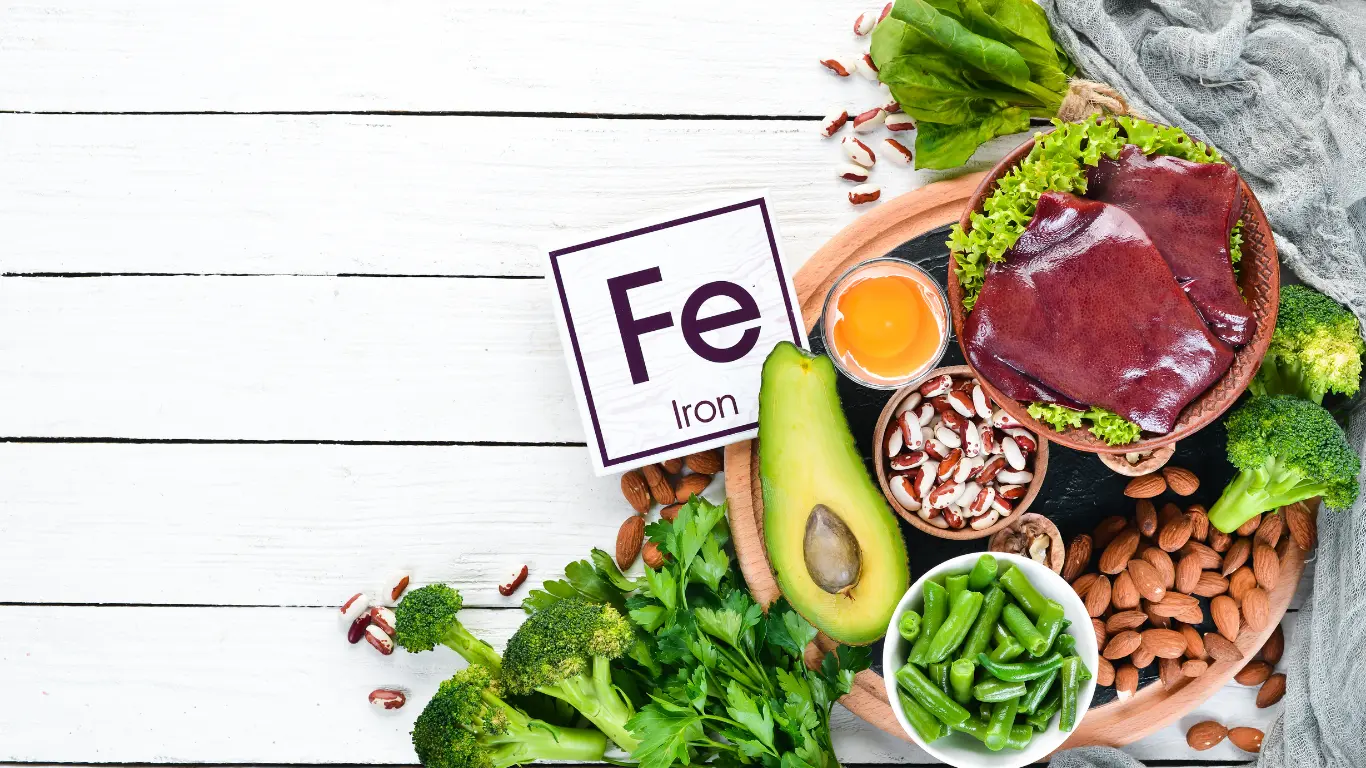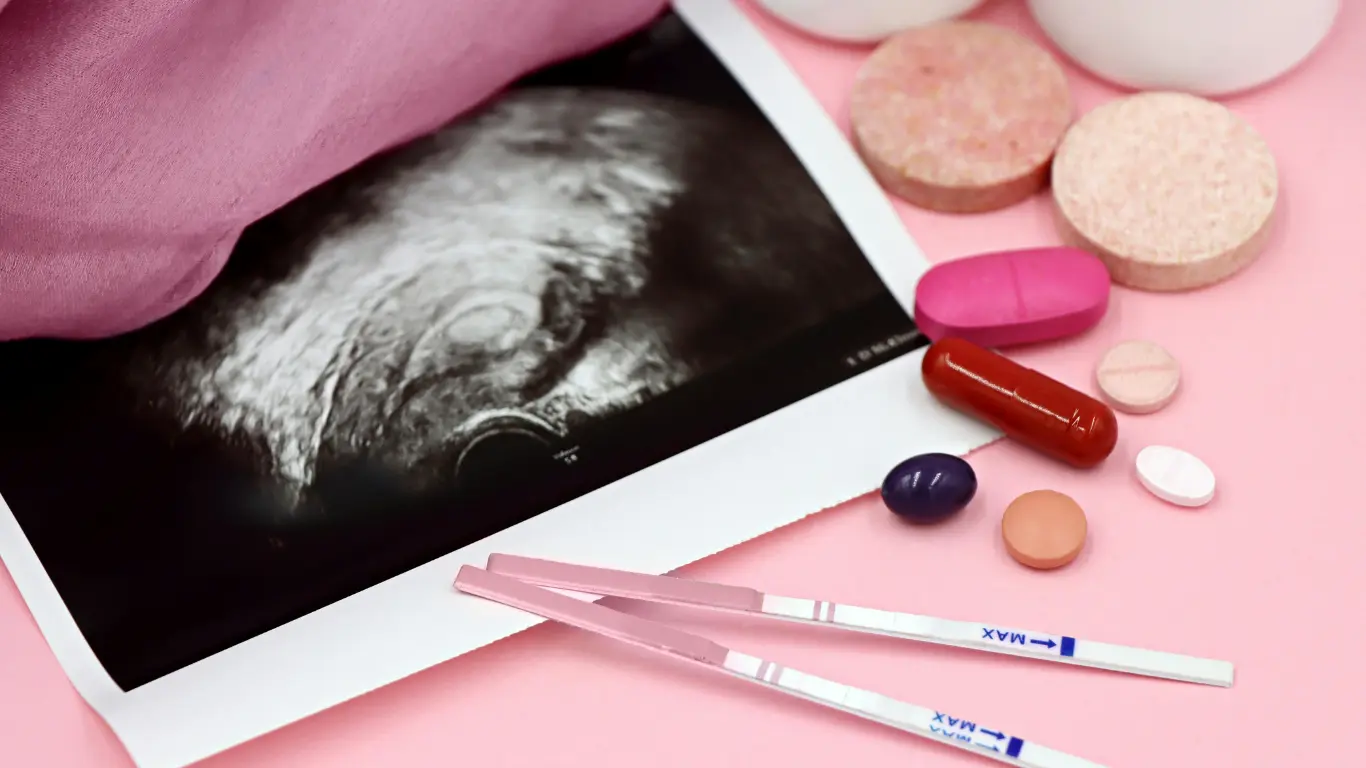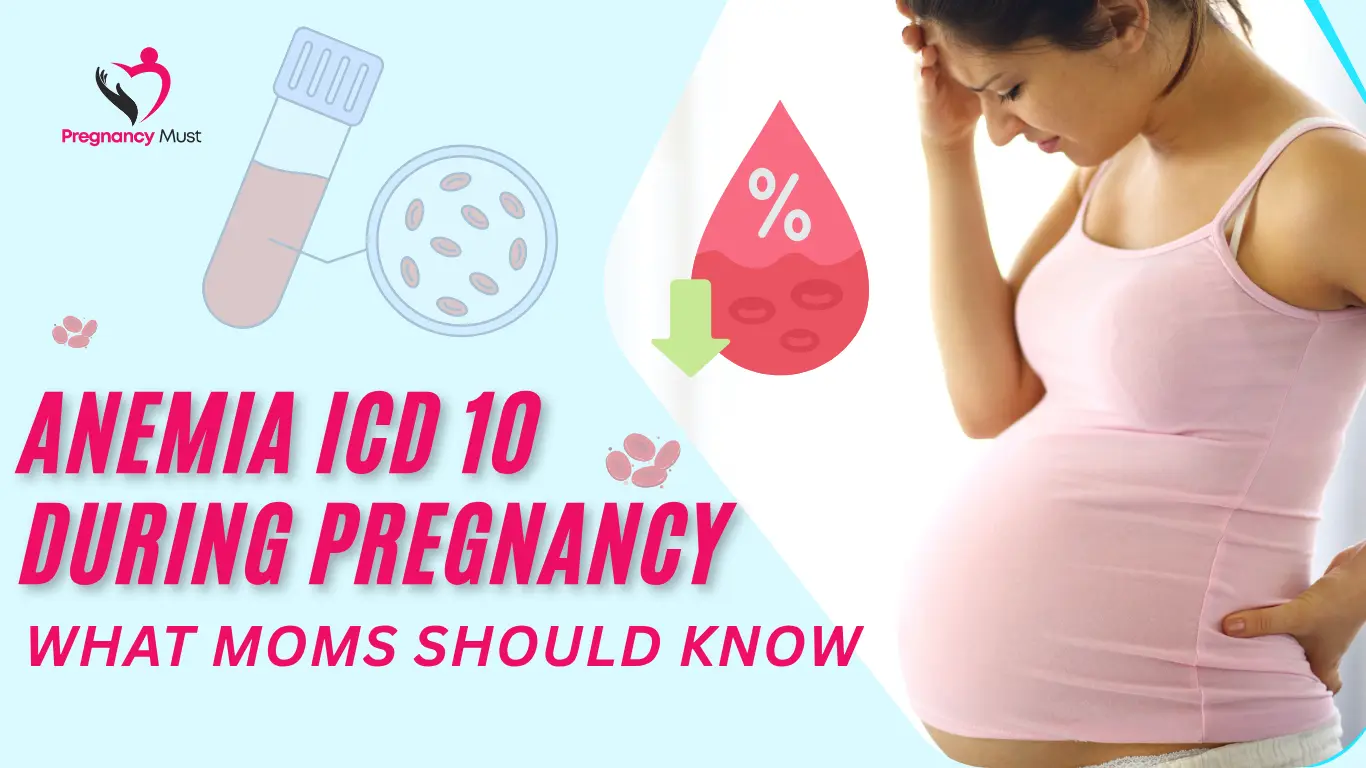Anemia ICD 10 is the protocol in which anemia that are various in pregnancy is coded. These codes are used by doctors, nurses, medical staff and billing teams to document a patient’s condition accurately. Getting these codes correct is important for treatment planning and insurance. This guide explains everything in simple terms, focusing on the most common anemia types seen during pregnancy, especially iron deficiency anemia.
Table of Contents
- Understanding Anemia in Pregnancy
- Understanding Medical Terms on Your Records (Anemia ICD 10)
- Other Common Types of Anemia in Pregnancy
- What Doctors Track About Your Anemia (And Why It Matters)
- Why Doctors Ask What Trimester You’re In
- Why You Must Use Two Codes of Anemia ICD 10
- Treatment Pathways for Anemia During Pregnancy
- FAQ: Anemia ICD 10 in Pregnancy
- Final Thoughts
Understanding Anemia in Pregnancy
Anemia develops when your body doesn’t have enough healthy red blood cells to carry oxygen. During pregnancy, this can make both mother and baby feel unwell. It’s usually caused by a lack of important nutrients or other health conditions that reduce red blood cell production. It’s very common and can be mild or serious depending on the cause. Doctors diagnose anemia with blood tests and then treat it depending on what’s causing it.
Causes of Anemia in Pregnancy
Not enough iron in the diet (iron deficiency anemia)
Iron is necessary for producing red blood cells, which carry oxygen to the body. Your body needs more iron than usual when you are pregnant to help supply you and your baby with enough oxygen. Your body might not be able to make sufficient red blood cells if you don’t get enough iron from your diet, resulting in iron deficiency anemia. This can cause fatigue, pale skin, and shortness of breath, especially in the second and third trimesters.
Lack of folic acid (folate deficiency anemia)
Folate is a B vitamin that helps your body make new cells like red blood cells. During pregnancy, folate needs increase because your body is making more blood and supporting your baby’s development. If you don’t consume enough folic acid through diet or supplements, it can result in fewer and poorly formed red blood cells, causing anemia. This type can also increase the risk of birth defects if not treated.
Low vitamin B12 levels
Vitamin B12 is closely linked with folate in the aid of production of red blood cells and the proper functioning of the brain and nerves. Without B12, you can end up with big, abnormal red blood cells that do not work properly. Women with a vegetarian or vegan pregnancies are more likely to be B12 deficient. Symptoms may include fatigue, memory issues, and nerve-related problems such as numbness or tingling, along with anemia.

Long-term health issues or inherited conditions
Chronic illnesses like kidney disease or autoimmune disorders can affect how red blood cells are made or how long they live. Inherited diseases, such as thalassemia or sickle cell disease, disrupt the shape or function of red blood cells. These anemia types may be more complex to treat during a pregnancy and may need care from a hematologist or a maternal-fetal medicine expert.
Signs of anemia during pregnancy
Feeling tired or weak
When your body doesn’t have enough healthy red blood cells to carry oxygen, everyday tasks can feel exhausting. Even after resting, you may still feel sluggish or run-down. This tiredness isn’t just from being pregnant—it’s your body signaling that it’s working harder to supply oxygen. Low iron or vitamin levels commonly cause this fatigue, and it’s one of the earliest and most common signs of anemia during pregnancy.
Pale skin
Anemia can make your skin look paler than usual. The lack of red blood cells means less color in your face, lips, or even inside your eyelids. This change is often noticeable to family members or doctors during checkups. In some cases, the skin might also feel cooler to the touch. Pale skin doesn’t always mean anemia, but in pregnancy, it’s a sign worth checking with a doctor.
Trouble breathing
Shortness of breath or feeling winded during light activities can be a warning sign. When your blood doesn’t carry enough oxygen, your lungs and heart work harder to deliver it to your tissues. This can lead to faster breathing, especially when walking or climbing stairs. If you feel like you can’t catch your breath more often than usual, it could be linked to anemia.
Dizziness
Feeling lightheaded or unsteady, especially when getting up quickly, is another symptom of anemia. With fewer red blood cells to carry oxygen, your brain might not get enough, causing dizziness. This can also happen when standing for long periods. In severe cases, it could lead to fainting. It’s important to take dizziness seriously during pregnancy, especially when combined with other symptoms.
Fast heartbeat
Your heart may beat faster than usual if your body is trying to make up for low oxygen levels. A fast or irregular heartbeat, also called palpitations, can happen at rest or with activity. It’s your heart’s way of pumping more blood to deliver enough oxygen. If you notice this happening regularly, especially alongside fatigue or breathlessness, anemia might be the reason.
Understanding Medical Terms on Your Records (Anemia ICD 10)
When you’re pregnant and diagnosed with anemia, your doctor will include special codes in your medical file. These aren’t for you to memorize—they’re mainly used by healthcare systems and insurance. One type of code shows you’re pregnant and have anemia. Another one shows exactly why—like low iron or not enough folic acid. Both are important. Together, they help doctors give you the right treatment and make sure insurance supports the care you need. You don’t have to worry about the codes—just know they’re part of your care plan.

The most common type of anemia during pregnancy is iron deficiency. This happens when your body doesn’t have enough iron to make healthy red blood cells. Since your blood volume increases during pregnancy, you need extra iron to stay strong and help your baby grow. If you feel tired, dizzy, or short of breath, it could be due to low iron. Thankfully, this can often be treated with iron-rich foods, prenatal vitamins, or iron supplements. In severe cases, your doctor may suggest that you receive iron through an IV. Always consult your doctor so that treatment is the best possible for you.
Anemia in pregnancy The most prevalent cause of anemia in pregnancy is iron deficiency. Your body uses iron to produce red blood cells, and sure enough, when you’re pregnant, your body requires more iron. And if you skimp on iron, your red blood cell count can fall and you’ll feel fatigued.
Here are the Anemia ICD 10 codes used:
Anemia ICD 10 Code Description
D50.0 Iron deficiency due to long-term blood loss
D50.8 Other types of iron deficiency
D50.9 Iron deficiency with no known cause
Example: If a woman in her third trimester is diagnosed with iron deficiency, her codes might be:
- O99.013 for third trimester anemia
- D50.9 for unspecified iron deficiency anemia
If her iron deficiency is from known blood loss, like previous heavy periods, D50.0 would be used instead.
Other Common Types of Anemia in Pregnancy
Not all anemia during pregnancy is caused by low iron. Some women don’t get enough folic acid (a B vitamin), which helps make healthy blood. Others may have low vitamin B12, especially if they don’t eat animal-based foods. A few women may have inherited conditions like sickle cell or other rare blood disorders. Your doctor will do tests to find the exact cause. Knowing the type of Anemia ICD 10 codes helps your doctor choose the best treatment—like B12 shots, folic acid tablets, or more regular monitoring. The goal is to keep you and your baby safe and healthy.
Other types of anemia can develop in pregnancy in addition to iron deficiency. Such As-
Type | Anemia ICD 10 codes | Description |
Folate deficiency | D52.0 | Caused by lack of folic acid |
Vitamin B12 deficiency | D51.0 | Caused by low vitamin B12 |
Sickle cell anemia | D57.1 | Inherited condition without crisis |
Aplastic anemia | D61.9 | Bone marrow stops making enough blood cells |
Unspecified anemia | D64.9 | Used when the cause is unknown |
Folate and B12 are essential for healthy red blood cells. If diet or absorption is poor, these types of anemia may develop. Sickle cell and aplastic anemia are less common but more serious. The “unspecified” code (D64.9) should be used only when the exact cause isn’t clear after testing.
What Doctors Track About Your Anemia (And Why It Matters)

When you’re pregnant and diagnosed with anemia, your doctor keeps track of many important details—like when it started, your symptoms, your blood test results, and what’s being done to help you feel better. This helps everyone involved in your care know exactly what’s going on. It also makes it easier to get coverage for tests or treatments through insurance. You don’t need to memorize these details yourself, but knowing your care is being tracked carefully helps give peace of mind that you’re in good hands.
Why Doctors Ask What Trimester You’re In
Doctors often mention which trimester you’re in when talking about anemia. That’s because your body has different needs during each stage of pregnancy. If you’re anemic early on, it may affect how your baby grows. If it shows up later, it may impact how you feel during labor. Your doctor also looks at what’s causing the anemia—like iron, folate, or B12 levels. This two-part info helps your medical team decide the best treatment for you and your baby. So if your doctor says they need to add more info to your file, now you know why!
Why You Must Use Two Codes of Anemia ICD 10
Anemia during pregnancy always needs two Anemia ICD 10 codes:
- One to show anemia during pregnancy (O99.011, O99.012, or O99.013)
- One to name the type of anemia (like D50.9 for iron deficiency)
This tells the full story—when it happened and what kind it is.
Example: A woman in her second trimester with folate deficiency anemia would be coded as:
- O99.012 – Anemia in second trimester
- D52.0 – Folate deficiency
Skipping one of these codes may lead to billing issues or incomplete medical records.
Treatment Pathways for Anemia During Pregnancy

Treatment of anemia in pregnancy depends on the type and severity. Iron supplements are typically the first thing to try. If those are ineffective or symptoms are more severe, doctors can administer iron through an IV. In case of anemia from folate or B12 deficiency, supplements will be given. A healthy diet and prenatal vitamins may also prevent or help you manage it. The process allows patients to be seen at the appropriate level and insurance to understand why they need to receive those treatments through a qualified provider. The choice of treatment is based on the severity and type of anemia. Options include:
- Iron supplements – Usually the first step
- IV iron – For more serious cases or if pills aren’t tolerated
- Folate or B12 tablets/injections – If vitamin levels are low
- Healthy diet – Foods rich in iron and vitamins
- Prenatal vitamins – To help prevent anemia from starting
Doctors will monitor blood levels and adjust treatment as needed. Having the right Anemia ICD 10 code helps prove that treatment is necessary.
FAQ: Anemia ICD 10 in Pregnancy
Q1: What is the Anemia ICD 10 in pregnancy?
A: These codes start with O99.01 and change depending on the trimester. Use O99.011 if anemia is found in the first trimester, O99.012 for the second trimester, and O99.013 for the third. But that’s only half the story—you still need to add another code to say what type of anemia it is, like low iron or folate.
Q2: What is the Anemia ICD 10 code for iron deficiency anemia in pregnancy?
A: You’ll use a pregnancy Anemia ICD 10 (like O99.013 for the third trimester) and then a second Anemia ICD 10 like D50.9 to show its iron deficiency. If the iron loss is due to something specific, like long-term blood loss, the Anemia ICD 10 would be D50.0.
Q3: Is anemia common in pregnancy?
A: Yes, it’s very common. Pregnancy increases your body’s need for iron and nutrients, so if your diet doesn’t meet those needs, anemia can develop. That’s why regular checkups and blood tests are so important during pregnancy.
Q4: Can I use the “unspecified anemia” code D64.9 for any case?
A: Try not to unless you truly don’t know the cause. That code is used when doctors can’t figure out what kind of anemia it is, even after testing. It’s better to use more specific codes so treatment and billing are more accurate.
Q5: Why are these codes so important?
A: These codes help everyone involved in your care stay on the same page. They tell doctors how to treat you and help insurance understand why certain tests or treatments are needed. Getting them right makes care faster and smoother for everyone.
Final Thoughts
Getting the anemia ICD 10 codes right during pregnancy helps everyone—doctors, patients, and billing teams. Always use two codes: one for the pregnancy stage and one for the type of anemia. This ensures good care and smooth insurance processing.
Keeping documentation simple, clear, and specific makes a real difference in how well pregnant women are cared for—and how well clinics can operate.
Stay updated with every concern may rise in pregnancy with Pregnancy Must –
